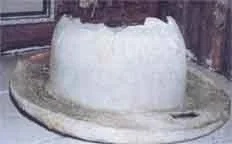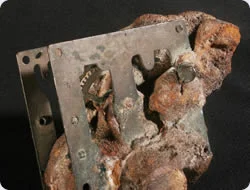Do Rocks and Fossils Take a Long Time to Form?
From grade school to college, we are taught that rocks and fossils take a very long time to form and that they are proof that the earth is hundreds of millions of years old. Part of the process of creating fossils is for the soil, dirt or sand surrounding the object to harden into rock. According to evolutionists, it takes a very very long time, thousands to millions of years for the rocks and fossils to form, or does it?
How long does it take? Can they form quickly? Are there any examples of rocks and fossils forming quickly? Let’s take a look and see:
Article originally posted at CreationEvolution.com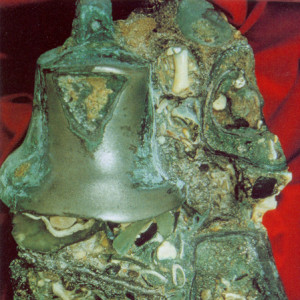
-
- Bells in solid rock. In 1852, the Isabella Watson, a wooden ship, sunk off the coast of Victoria, Australia. The bells from the ship were discovered in the 1990’s and currently belong to the Maritime Archaeological Unit of Heritage, Victoria. As you can see, the bells were partially surrounded by solid rock, which could only have formed in less than 150 years, not millions of years.
-

 Fossil shrimp. In 1994, scientists were studying the fossils of shrimp that were found in the stomachs of some very well preserved fossil fish found in Brazil. The scientists found a way to create similar fossil shrimp in only 4-6 weeks. The article reporting this research said: In only a few weeks, they managed to mimic a mineralisation process that takes millions of years in nature’ Yet the article has shown that such preservation does not need millions of years. Common sense indicates that whatever the process, it had to be rapid for the tissues to escape decay.
Fossil shrimp. In 1994, scientists were studying the fossils of shrimp that were found in the stomachs of some very well preserved fossil fish found in Brazil. The scientists found a way to create similar fossil shrimp in only 4-6 weeks. The article reporting this research said: In only a few weeks, they managed to mimic a mineralisation process that takes millions of years in nature’ Yet the article has shown that such preservation does not need millions of years. Common sense indicates that whatever the process, it had to be rapid for the tissues to escape decay.
-
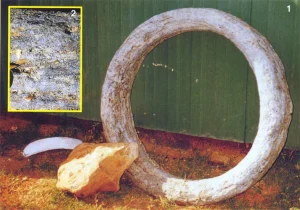 Fossil fence wire. This role of fence wire was discovered by an 11 year old girl at Eighty Mile Beach in the north of Western Australia. The role of wire is just over 2 feet in diameter and weighed 165 pounds. When they cut the rock open, they found the roll of modern day Number 8 fencing. This was the same type of wire used in the area between 1920 and 1970, which meant that the rock had formed around the fence in only 20-70 years, not millions.
Fossil fence wire. This role of fence wire was discovered by an 11 year old girl at Eighty Mile Beach in the north of Western Australia. The role of wire is just over 2 feet in diameter and weighed 165 pounds. When they cut the rock open, they found the roll of modern day Number 8 fencing. This was the same type of wire used in the area between 1920 and 1970, which meant that the rock had formed around the fence in only 20-70 years, not millions.
-
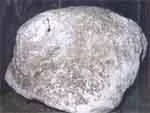
 Petrified ham, bowler hat and flour. On June 10, 1886, Mt. Tarawera on the North Island of New Zealand erupted. The eruption lasted for 4 hours. Several villages were destroyed by the lava and ash. The small town of Te Wairoa was one of those villages as it had been buried in ash. About 60 years they started excavating some of the buildings. Among the items they found that had been buried in the ash for all these years was a ham, a bowlers hat, several sandwiches and a bag of flour. All of them were as hard as stone as they had all been petrified by the ash in as little as 60 years.
Petrified ham, bowler hat and flour. On June 10, 1886, Mt. Tarawera on the North Island of New Zealand erupted. The eruption lasted for 4 hours. Several villages were destroyed by the lava and ash. The small town of Te Wairoa was one of those villages as it had been buried in ash. About 60 years they started excavating some of the buildings. Among the items they found that had been buried in the ash for all these years was a ham, a bowlers hat, several sandwiches and a bag of flour. All of them were as hard as stone as they had all been petrified by the ash in as little as 60 years.
-
- Pool filter sand. Many swimming pools use a sand filter to keep the water clean. While working on his swimming pool one day, a man in Ohio discovered that the sand in his pool filter had become hardened. It didn’t just harden into a crumbly hard sand, but it turned into a very hard sandstone. He had to take a hammer and chisel and several hours of work to break it up and remove it from the pool filter. The sand had only been in the filter for 5 years.
-
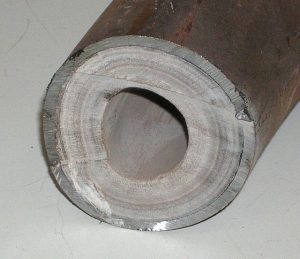 Limestone in pipe. While working at another creation ministry, a supporter called me one day to tell me that he had an amazing example of rapid rock formation. He worked in an oil and gas field in Louisiana. One of their metal pipes had become clogged. When they removed the pipe, they found that the inside of the pipe had been filled with a formation of a solid limestone. The limestone formed in about 3 months of high pressured gas, salt water and other minerals being pumped from a well through the pipe. A close examination of the limestone inside the pipe showed that it was also finely layered. If you look closely at the photo you can see the layering in the limestone. Had he taken the rock out of the pipe and showed it to an evolutionist, they would have said that it formed over hundreds of years because of all the layers, many thousands or millions of years ago.
Limestone in pipe. While working at another creation ministry, a supporter called me one day to tell me that he had an amazing example of rapid rock formation. He worked in an oil and gas field in Louisiana. One of their metal pipes had become clogged. When they removed the pipe, they found that the inside of the pipe had been filled with a formation of a solid limestone. The limestone formed in about 3 months of high pressured gas, salt water and other minerals being pumped from a well through the pipe. A close examination of the limestone inside the pipe showed that it was also finely layered. If you look closely at the photo you can see the layering in the limestone. Had he taken the rock out of the pipe and showed it to an evolutionist, they would have said that it formed over hundreds of years because of all the layers, many thousands or millions of years ago.
-
- Bottle stalagmite. In the early 1950’s, a lemonade bottle was left behind in the Jenolan Caves in New South Wales, Australia. The bottle had been placed directly underneath a stalactite that regularly dripped down onto the bottle. This photo was taken about 30 years later and shows the bottle being covered by a stalagmite.
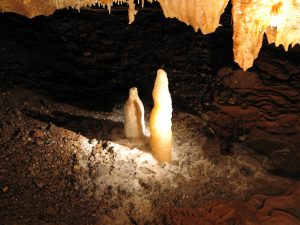
- Bottle stalagmite. In the early 1950’s, a lemonade bottle was left behind in the Jenolan Caves in New South Wales, Australia. The bottle had been placed directly underneath a stalactite that regularly dripped down onto the bottle. This photo was taken about 30 years later and shows the bottle being covered by a stalagmite.
-
- Stalagmite chair. About 10 years ago, an Indiana family visited the Mollie Kathleen Gold Mine near Cripple Creek, Colorado. The owner of the mine took the family deeper into the mine than he took most people. The sites before them were breathtaking. There were stalactites and stalagmites growing everywhere. This part of the mine had stopped operations in 1961. Yet, the stalactites and stalagmites ranged in size from several inches to 9 feet. In one location, stalagmites over 6 inches tall were forming on a wooden chair that had been left the in the mine.
-
- Fast stalactites. In the early 1930’s, a company in Queensland, Australia, opened up a lead and zinc mine at Mt. Isa. In 1987, about 55 years after the mine was first opened, this photo was taken. Look at the size of the two men (circled) compared to the size of stalactites hanging from the ceiling of the mine. They sure didn’t take thousands or millions of year to form, did they.
These are only a few examples of how fast rocks, fossils, stalactites and stalagmites can form. If these can form is such short time, isn’t it possible that with the right chemicals and conditions that all of the fossils ever found could also have formed quickly? Do you think they could have formed since the world was created 6,000 years ago or in the 4,500 years since Noah’s Flood?
Fast fossils and rocks help supports what the Bible says about the Creation and the Flood and not millions of years.
